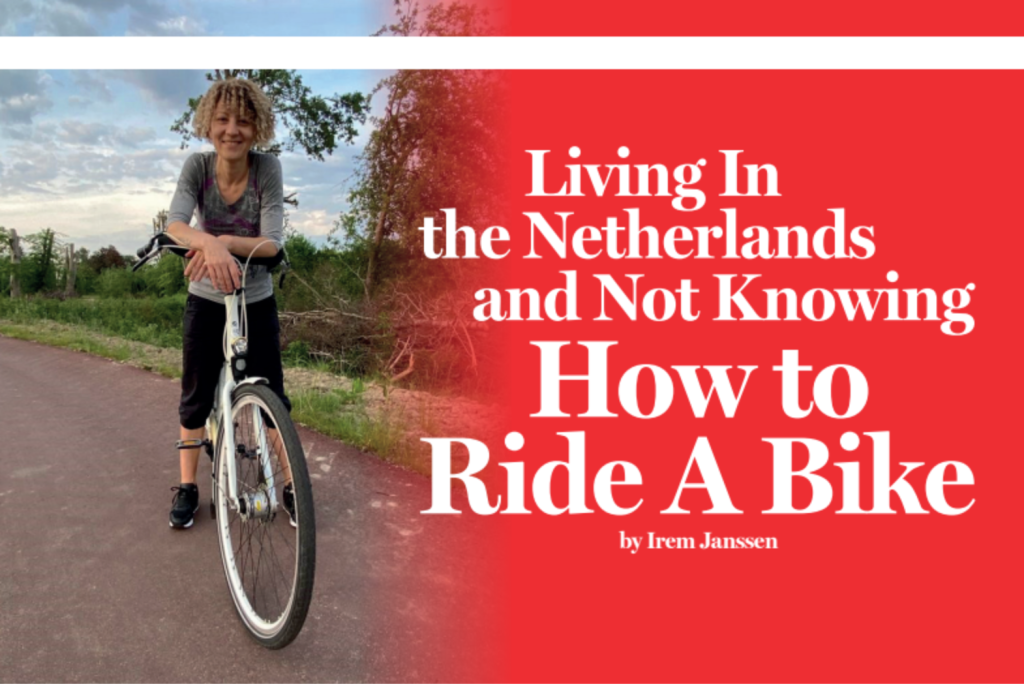Columns
Living In the Netherlands and Not Knowing How to Ride A Bike
As much as the Netherlands is famous for Amsterdam canals, it’s equally known for its cycling culture. Cycling is the primary mode of transport for 36% of the Dutch population.
Excellent cycling infrastructure such as cycle paths, tracks, safe intersections, and ample bicycle parking is pivotal in enabling this sustainable promoting habit. It’s notable that in 1940, the Dutch, owned four million cycles when the population was eight million. However, after the second world war, the pendulum swung towards using cars as a chief means of
transport. Unfortunately, the number of child fatalities in road traffic accidents provoked a protest, ’Stop de Kindermoord’. As a consequence of this and other timely factors such as oil shortages turned government policies around. The geography of the Netherlands (a cool and relatively flat country), public policy, roadway planning along with apt training attracted the Dutch to cycling.
The Dutch schools train their children to gain a cycling diploma about the time before they enter secondary school. Thus a combination of factors helped the Netherlands embrace cycling. This reminds me of a personal story of one of my teammates, Irem Janssen, which she documented and was published as a feature story on Eindhoven News.
Irem reminisces, “In a controllers’ conference, I met this handsome and charming Dutchman, whom I couldn’t get out of my mind ever since. Yes, a love story brought me to this lovely, bike-loving country. I moved to the Netherlands 14 years ago as an expat. I am a finance professional, and now, I live in Eindhoven with my husband, who stole my heart at that conference. Apart from my full-time job, I work as a volunteer writer at Eindhoven News”. I grew up in a hilly city, in an apartment in the middle of a city centre. Where I grew up, bikes are toys for kids. I also used to have one, a flashy red bike with three wheels, which I inherited from my elder sister. I followed her footsteps and stopped using it for around seven years. As part of a tradition, it was handed down to a 4-year-old relative.
There were boys riding bikes with two wheels.
But everybody knew that they would enjoy it only until the age of fifteen. Cycling is not encouraged much in my home city. The reason could be wild driving habits and less organised traffic. Therefore letting a child ride a bike in running traffic is out of the question for a mother unless she is a huge risk-taker. If you are a girl, you will not switch to a two-wheel bike anyways. If you are a boy and if you love your mother, then you would say goodbye to your bike when you hit fifteen or so because you never rode it in the traffic until then. Also, proof that you are not a small kid anymore.
There was no way my mother could know the terror of humiliation I would experience in the Netherlands at the age of 30. Imagine me on an adult bike, totally stiff. My husband is holding the seat, giving instructions about keeping my balance. Every second he loosens his hands, I lean to one of the sides, not able to use my hands or legs in an efficient manner. It looks like I am frozen together with the bike. It’s too big of a “test of trust” in a marriage. Let’s be honest; I am not five years old, and he is not my father.
Meanwhile, neighbourhood kids pass by on their bikes, riding like the wind and laughing at me. One of them teases: “You are missing the orange flag, hahaha”. (A safety flag, used by children to ensure visibility) When I was fully convinced that learning to ride a bike at the age of 30 is mission impossible, I suggested buying an adult bike with three wheels. I was very excited. This would solve my problem. I no longer have to be left behind on family biking tours; I could enjoy nature and fresh air. However, my step-kids were very clear that they would not prefer to bike next to me. A not-so-cool stepmother was their nightmare though they were polite to not voice that out. My husband was not ready to give up yet.
As a true Dutch, he loves outdoor activities; he has multiple bikes in the garage. And he thinks that it is ridiculous to take the car to places where you can easily bike.
During a gathering, our dear neighbour volunteered to end this frustration. He agreed to teach me how to ride a bike on a relatively quiet road. I was using my stepson’s bike. A smaller one on which I can quickly put my feet back on the ground to feel safe. Twelve years on, I still can’t let my right hand free and sign that I am turning right. I still panic when I have to pass other bikers on a bridge, but I certainly enjoy biking.
by Irem Janssen

